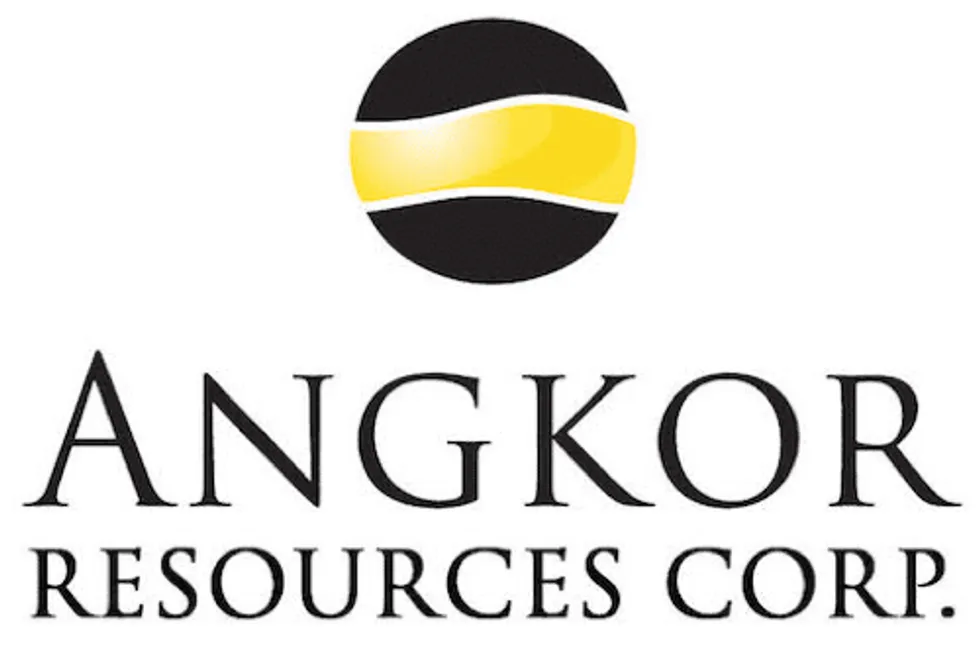GRANDE PRAIRIE, AB, (Jan. 25, 2022): Angkor Resources Corp. (TSXV: ANK and OTCQB: ANKOF) (“Angkor” or “the Company”) reports it received the first 12 assays on rare earth elements (REEs) of samples from Gossan Hills prospect on the 100% owned Andong Meas license.
 The initial twelve assays were completed by Australian Laboratory Services (ALS) for RREs across the Gossan Hills prospect, which is south and adjacent to the Canada Wall copper porphyry system. The assays returned total ppm values of REEs ranging from 244 ppm – 1025 ppm total REE. Both the sum totals and the locations are illustrated at left and indicate that the elevated REEs are evident over an area exceeding a square kilometer; nine of the 12 assayed samples exceed 500 ppm.
The initial twelve assays were completed by Australian Laboratory Services (ALS) for RREs across the Gossan Hills prospect, which is south and adjacent to the Canada Wall copper porphyry system. The assays returned total ppm values of REEs ranging from 244 ppm – 1025 ppm total REE. Both the sum totals and the locations are illustrated at left and indicate that the elevated REEs are evident over an area exceeding a square kilometer; nine of the 12 assayed samples exceed 500 ppm.
REEs and accompanying alkali and transition metals, are complex for a number of reasons, including the variance in value of each type of element, which ranges from $5.40 per kilogram for Strontium (Sr) and $73,700 per kilogram for Cesium (Cs). Strontium is often used in magnets and fireworks and Cesium is used in drilling fluids and in the clocking components of mobile phones and GPS systems.
Commercial viability of REEs can only be determined after ample proof that both sufficient grade and tonnage are available, and the extraction method is economic.
D Weeks, CEO comments, “We require more data and sampling to begin to assess commercial quantity. At this point, we are pleased with the initial indications, but further exploration will give us more information to determine the next step.” The REE anomaly is open to the west, south and east. A wider spaced sampling program will be conducted to determine the extent of the target area.
Angkor will proceed with a further grid sampling on 100 meters x 100 meters over a minimum expanded terrain of several square kilometers to see if the elevated REE levels are consistent throughout a greater area.
The grid sampling will consist of laterite sampling of surface material and also auger sampling to a depth of at least 7 meters. As well, a ground magnetic survey has been started and will likely take at least one month to complete. The survey is being done on 100m line spacing and will cover the CW copper porphyry target and the REE in regolith target to the south.
QUALIFIED PERSON
Dennis Ouellette, B.Sc, P.Geo., is a member of The Association of Professional Engineers and Geoscientists of Alberta (APEGA #104257) and a Qualified Person as defined by National Instrument 43-101 (“NI 43-101”). He is the Company’s VP Exploration on site and has reviewed and approved the technical disclosure in this document.
ABOUT ANGKOR RESOURCES CORP.
Angkor Resources Corp. is a public company, listed on the TSX-Venture Exchange, and is a leading resource optimizer in Cambodia with multiple licenses in NE quadrant of the country. In 2020, the company received approval and initiated negotiations on Production Sharing Contract (PSC) terms for Block VIII, a 7,300 square kilometre oil and gas license in Cambodia.
CONTACT:
Delayne Weeks, CEO Telephone: +1 (780) 831-8722
Email: [email protected]
Website: http://www.angkorresources.ca or follow us on Twitter @AngkorResources
Neither TSX Venture Exchange nor its Regulation Services Provider (as that term is defined in the policies of the TSX Venture Exchange) accepts responsibility for the adequacy or accuracy of this release.
Certain information set forth in this news release may contain forward-looking statements that involve substantial known and unknown risks and uncertainties. These forward-looking statements are subject to numerous risks and uncertainties, certain of which are beyond the control of the Company, including, but not limited to the potential for gold and/or other minerals at any of the Company’s properties, the prospective nature of any claims comprising the Company’s property interests, the impact of general economic conditions, industry conditions, dependence upon regulatory approvals, uncertainty of sample results, timing and results of future exploration, and the availability of financing. Readers are cautioned that the assumptions used in the preparation of such information, although considered reasonable at the time of preparation, may prove to be imprecise and, as such, undue reliance should not be placed on forward-looking statements.
